Ranking near the top of the SERPs for short-tail keywords in competitive business verticals can be extremely difficult. Wikipedia, Dictionary.com, and similar sites have the market cornered on ranking at the top of search results. Even if you manage to rank in the first position, there are featured snippets, ads, map packs, and other SERP layouts that are dominating the space as well.
Because short-tail keywords have such broad search intents, it's in the search engine’s best interest to try and answer questions directly in SERPs. That is the intent of featured snippets. If a search engine is able to answer a user’s query without them leaving the results page, they believe that delivers the best result. And the proliferation of featured snippets is only beginning. According to Search Engine Land, 19.45% of queries will display rich answers (a form of featured snippets) in Google.
A search for “what is orthodontics” in an incognito Google Chrome window displayed the following featured snippet:

This search result satisfies at least one large search intent: “What is orthodontics?” I use this as an example because my agency and I had been trying to get a client to rank for this keyword for some time. They were a dental practice with locations across the US that offered both orthodontic and general dental procedures. We had optimized their locations for their orthodontic procedures, but we wanted to get their non-localized service pages to rank as well in order to draw new patients that may be in the beginning stages of looking for a new orthodontist. But without a local qualifier, it was difficult to get the pages to rank for the short-tail searches.
After a year and change of writing, optimizing, re-writing, and re-optimizing the content — all while building links — we weren't getting any movement with our organic rankings. It seemed that business websites were not meant to rank for these short-tail keywords. Content creators have long lamented that featured snippets don’t attribute where the content in the SERP comes from, thus leaching traffic away from the site.
We believed that rich snippets in SERPs would become more prominent — especially with mobile and voice search on the rise — and that, even without proper attribution, it would benefit our client to appear in these types of search results, especially if we were able to rank in long-tail, question-oriented searches. If we could rank in a featured snippet, where a potential consumer was asking a question about a service that we provide, it would benefit us to answer that question for them. Not only would we achieve the coveted “zero position,” we would position our client as authorities in their vertical, potentially increasing conversions.
With this in mind, we began developing the strategy that would ultimately lead us to ranking in featured snippet searches.
Q&A content
Question and answer content on websites is fairly standard. Many companies will place Frequently Asked Questions (FAQ) content on their sites to help users with any questions they may have instead of answering them directly. Noting the prevalence of featured snippets in SERPs, we used the Q&A format to create new content to find out: a) could we rank for these queries? and b) would it benefit our client to rank in these queries?
Research & content creation
Using SEMRush, we conducted keyword research to find long-tail keywords with high monthly search volumes. Some of the phrases we decided to create the content around were “how long does it take to put on braces,” “how much does Invisalign cost without insurance,” and other similar queries. We also asked our client’s call team and Livechat correspondents to send us the most-asked questions they receive about orthodontics. The questions that the internal teams provided were primarily about pricing and insurance. This information was vital for our new Q&A content, as it allowed us to create answers we knew our users were looking for.
While researching current featured snippets, we gleaned that the content must emphasize the answer, not the answerer. Meaning, the content needed to be straightforward and answer the query without any marketing fluff. We ensured that our headers included the targeted keyword, along with the title tags. Once the content was created, we placed each question in the main navigation bar on the site, with each one leading to a separate landing page.
Link building
As most SEOs will tell you, backlinks are still a very important ranking factor. It was our belief that building links to our new Q&A content would be essential in ensuring that it ranked well. We built links exclusively via sites like Quora and Reddit, the idea being that these are places where people are already asking questions that we can answer as experts, while linking back to our site. In order to avoid spamming, we limited the number of links that we built per month.
Results
After a year of collecting data, we can confidently say that not only were we successful in getting the site to rank for a featured snippet, but traffic to the orthodontics content increased by 46.10%, conversions from the content increased by 235%, and the conversion rate increased by 129.30%.
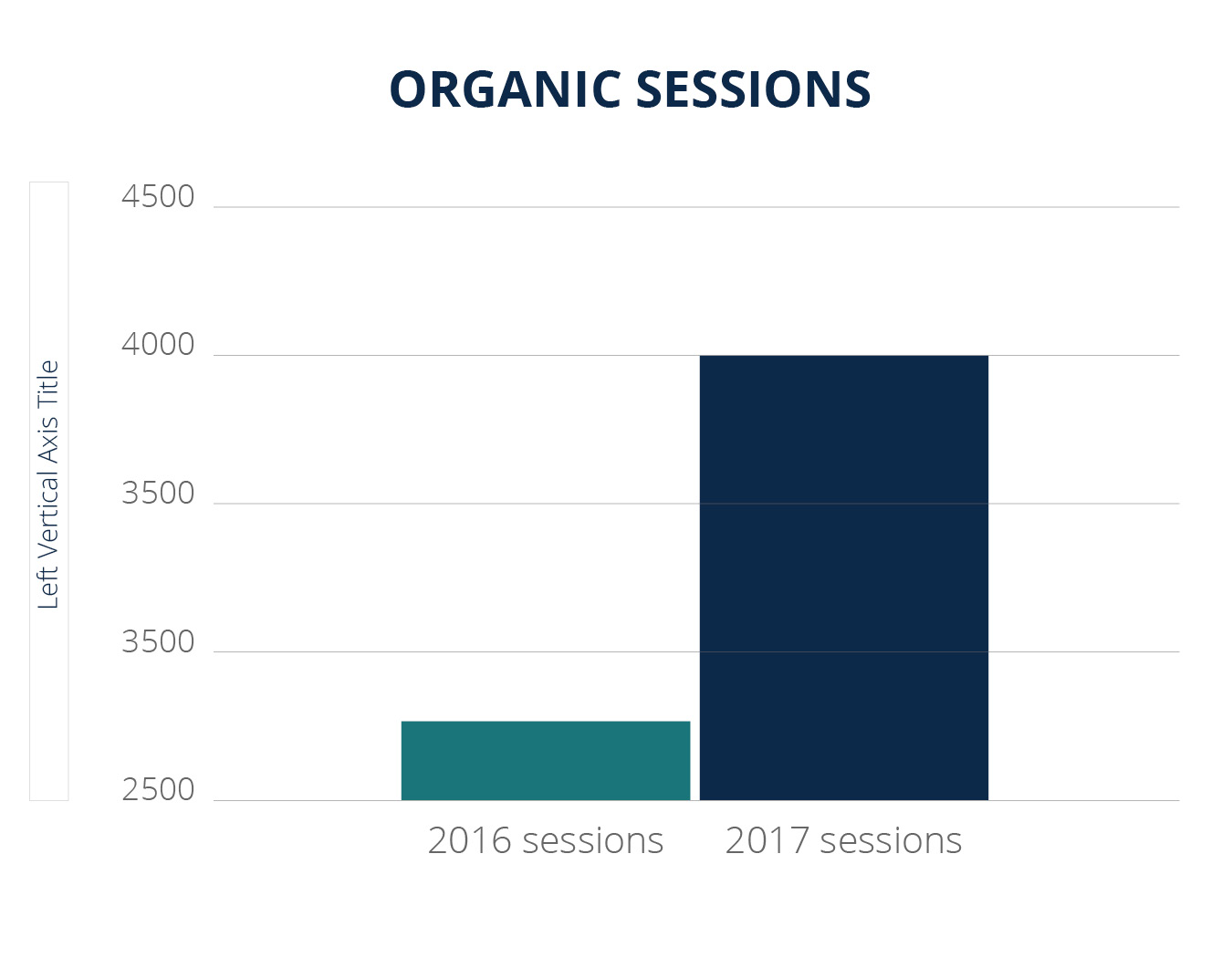
Organic sessions to the orthodontic Q&A content
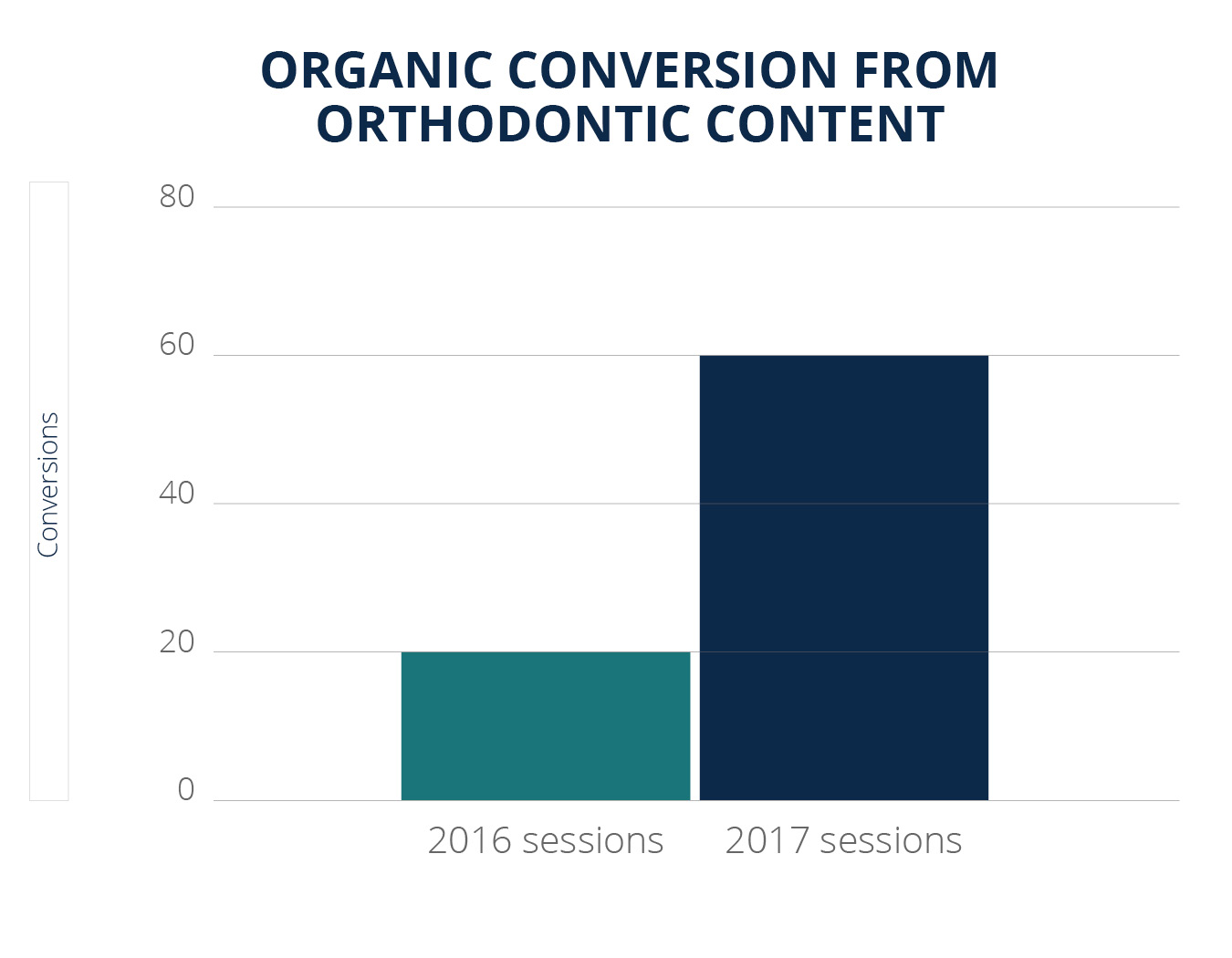
Organic conversions from orthodontic Q&A content

Organic conversion rate from orthodontic Q&A content
The results were even more striking on mobile, where traffic increased by 91.46%, conversions increased by 322.22%, and conversion rate increased by 120.53%.
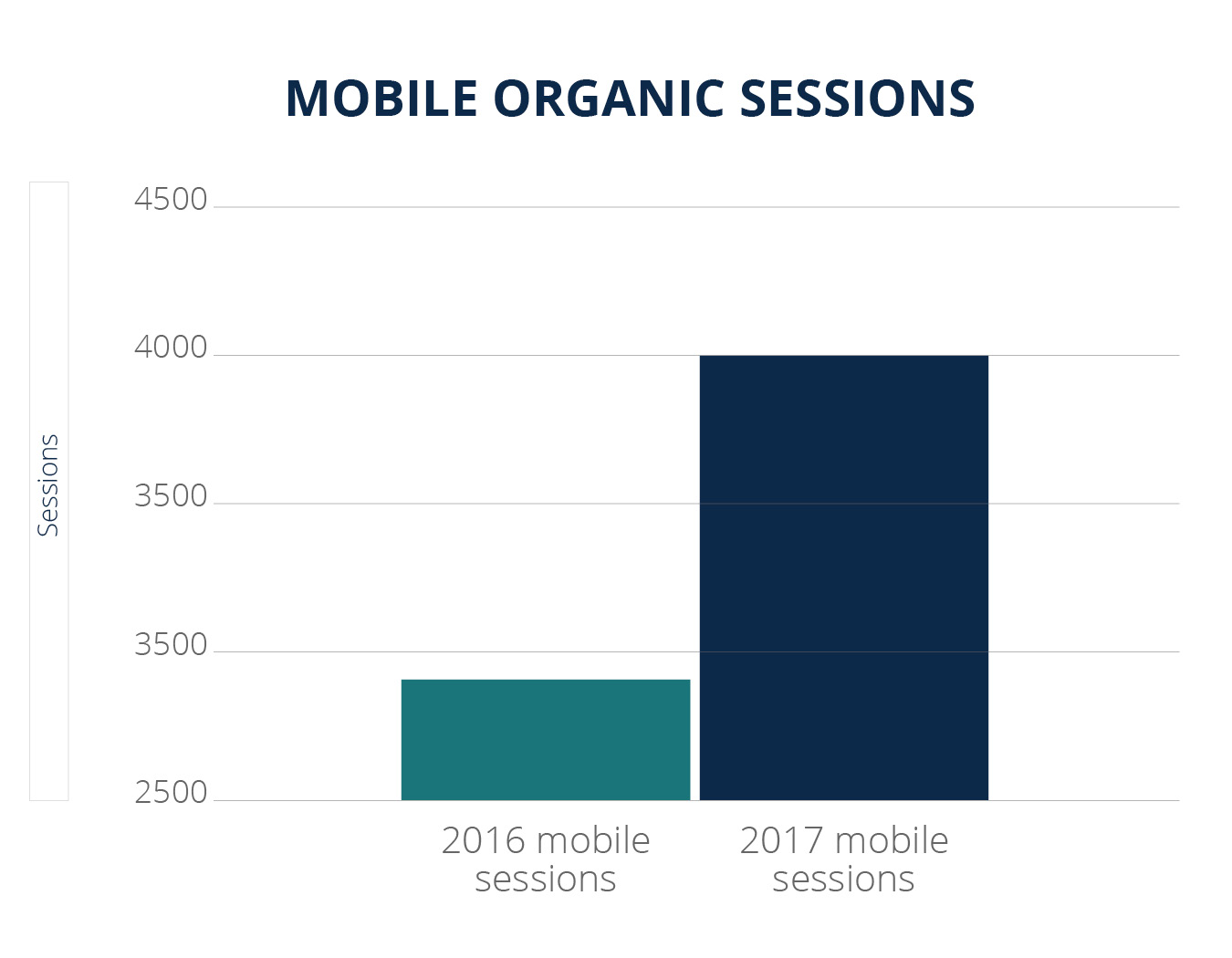
Mobile organic sessions to the orthodontic Q&A content

Mobile organic conversions from orthodontic Q&A content

Mobile organic conversion rate from orthodontic Q&A content
Measurement method
For this study we only looked at organic and mobile organic traffic. We also only looked at traffic that landed on our site via the orthodontics content (meaning we only measured users that entered the site via one of the orthodontics pages from an organic source).
Attention metrics
It should be noted that this implementation was not successful in every facet. One of the most important goals for new content is making sure that users engage with it. And at Rebuild Group, we normally measure content engagement through attention metrics: pages/session, average time on site, bounce rate, etc.
Upon collecting the data, we noticed that all attention metrics decreased year over year. Our hypothesis is that because the content is both meant to answer a question and is easily digestible, users were more likely to leave the site after their question was answered. It explains why traffic, conversions, and conversion rate increased so much year over year and attention metrics decreased.
Rankings
Most important to this experiment, we were able to have our site rank in the first position — or zero position — in search results for the query “how long do you wear invisalign a day,” while also ranking on the first page (though not the first position) for other Q&A orthodontic terms.

We started ranking in the first position for this term in mid-January, though we lost the ranking shortly thereafter. We began to consistently rank in the first position in March and are still ranked there as of this writing.
Our belief is that by simply answering the question and including the keyword in crawlable parts of the content, we were able to rank in the first position for one of our targeted Q&A phrases, resulting in a featured snippet.
Conversions
Conversions were measured as the number of contact form submissions sent during sessions where a user entered the site via the orthodontic content. As mentioned above, conversions and conversion rates for all organic and mobile organic traffic increased greatly year over year. However, the effects were not seen until 9 months into the experiment.
When the traffic was measured at 90 and 180 days, organic traffic to the new content was steadily increasing overall and via mobile devices, but conversions and conversion rate had not gone up compared to the previous year. It wasn’t until 270 days in, when we first ranked in the featured snippet SERP, that conversions began to increase.
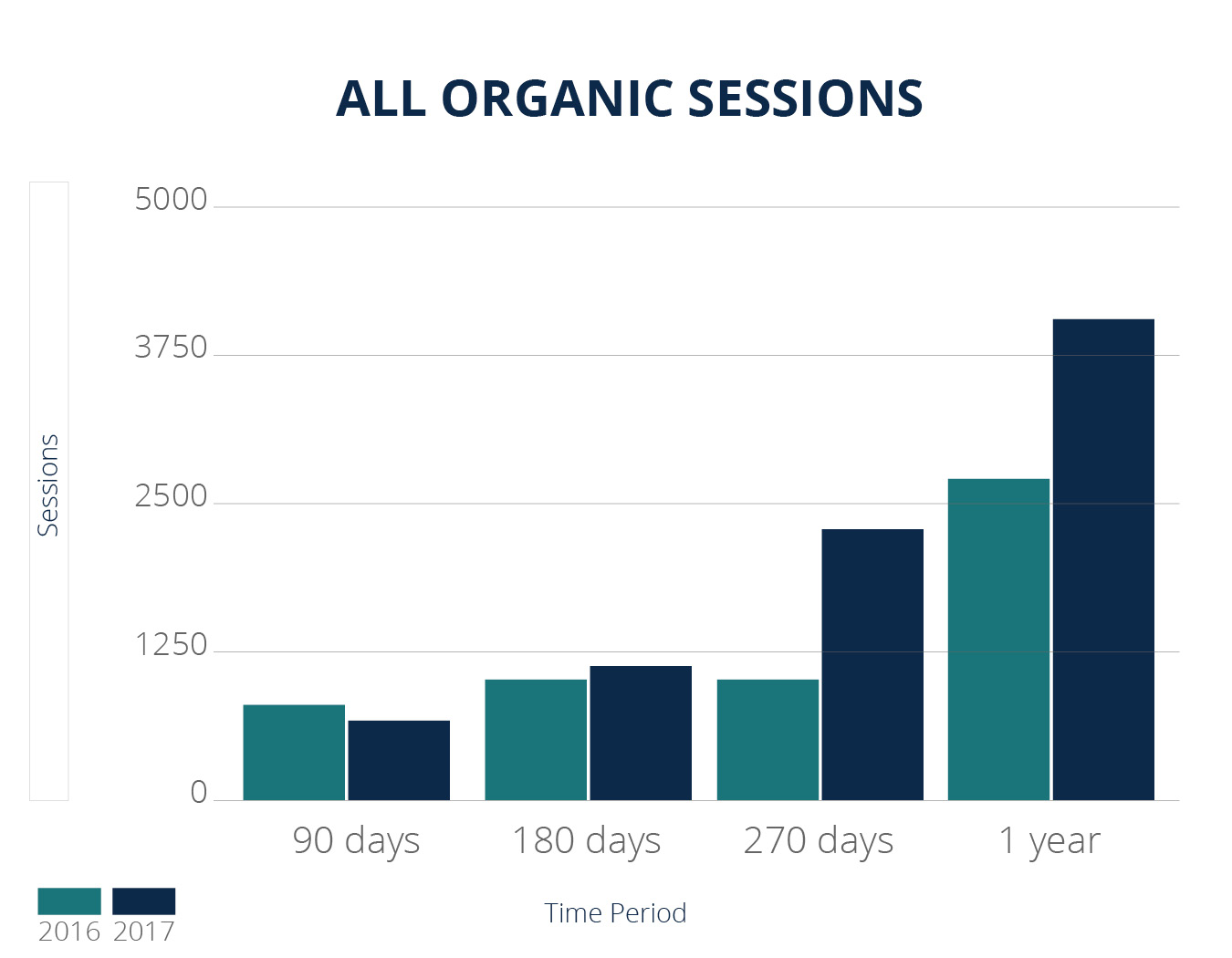
Organic traffic to the orthodontic Q&A content
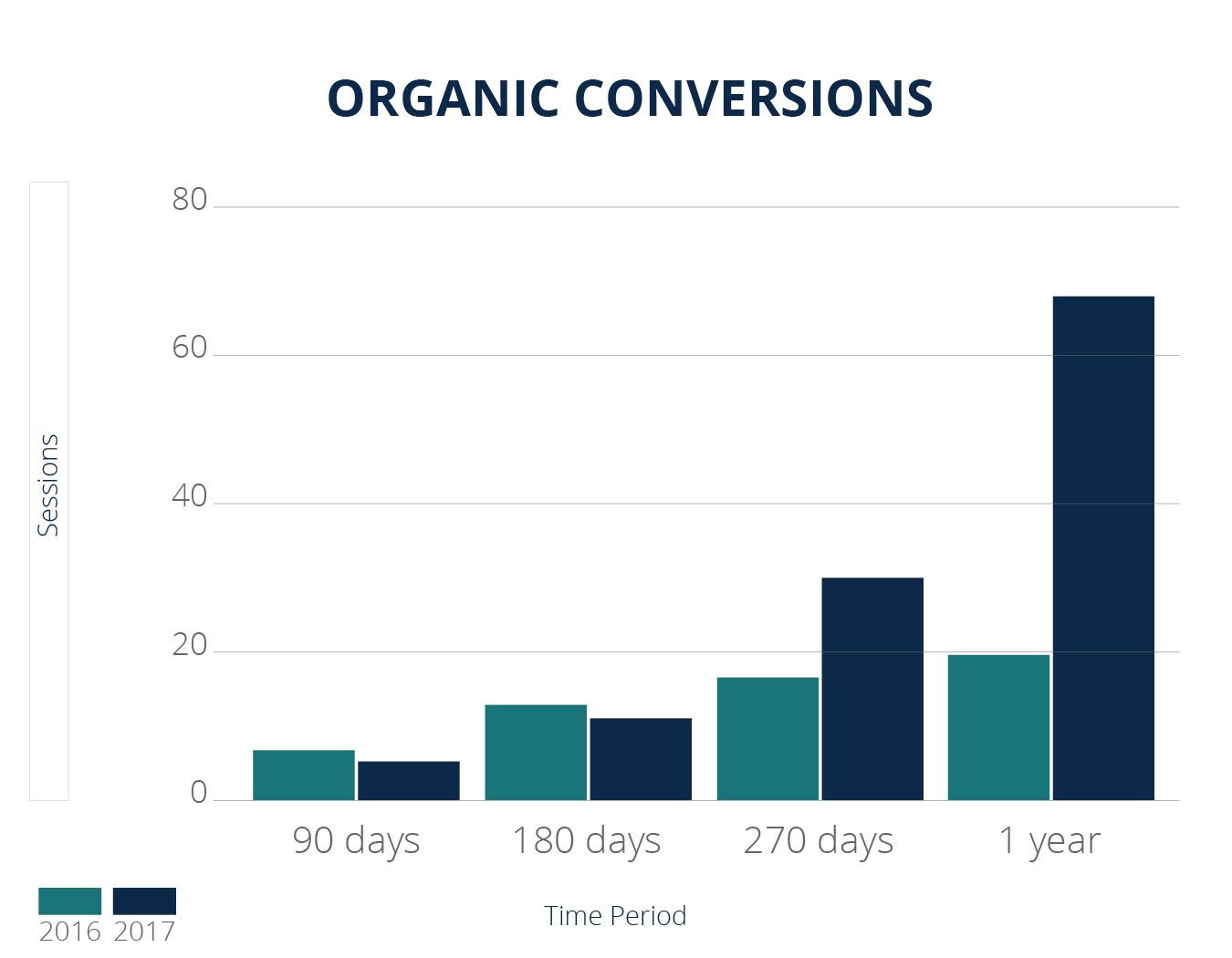
Organic conversions from orthodontic Q&A content
Once we were consistently ranking in the first position for a featured snippet SERP, while also ranking on the first page of SERPs for other queries, our conversions and conversion rates began to greatly increase.
Google Home
As stated earlier, voice search is on the rise. Once we were able to rank as a featured snippet in a targeted SERP, we wanted to see if that featured snippet would affect how Google Home provided an answer to the targeted query:
*Note: This video was recorded on my phone, so the quality is not the best. You may need to turn up your volume to hear the question and answer.
As you can see, Google Home clearly attributes the answer to our client, answers the question, and then sends the user to the Home App, where the answer is again shown:
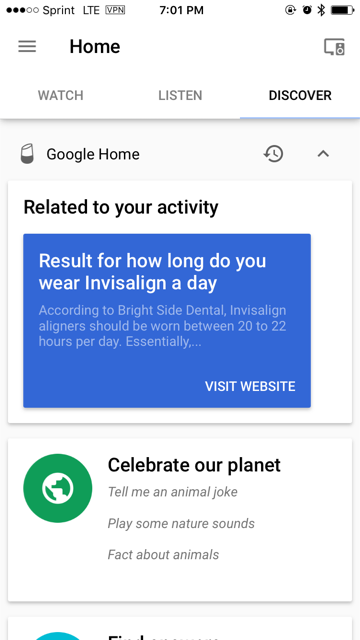
From there they can click through to the site on their mobile device:
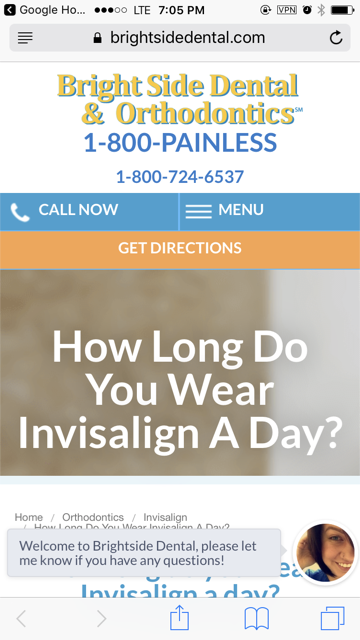
In the end we drew a strong correlation between the implementation of the Q&A orthodontics content, ranking highly in rich snippet SERPs, and increased conversions and conversion rates. But like all things SEO, there are no definites when implementing this kind of strategy. We implemented content that drove users to a site that offered services they were looking for. Someone searching “how to boil water” is not likely looking to buy new pots and pans. Ultimately, it's important to know what your users are looking for and cater to their searches. Once you're able to answer their questions with simple, to-the-point content, the rest is easy.


Hi Nick,
Nice write up!
I've been doing a lot of featured snippet optimization over the last 12 months and have also seen amazing results when creating and optimizing Q&A content, as you described in your post.
I wrote a post earlier this year on how to find EASY featured snippet opportunities - which I think you might find useful and help you find even more opportunities - because not all featured snippet opportunities are questions!
Hope you find it useful :)
Cheers,
David
Thanks for sharing your post David. It is a great resource and I'll definitely be using what you wrote on my other sites.
Hi Nick,
Thanks for the post. You have confirmed much of what we are experiencing.
Our traditional engagement metrics were mixed, with higher bounce rates. However, bounces under 30 seconds were low. The average time on page also increased, as readers were reading all or much of the blogs.
A few empirical findings:
Thanks for sharing the tips Eric. I'll have to see if they boost any of the pages that aren't quite hitting the "zero position" yet.
It's surprising that you saw that bounces under 30 seconds were lower, I would think if the time on site was lower then the bounce rate would be higher, but I guess new SEO territories upend conventional wisdom.
Hi Nick,
Glad to see you had positive results. Can you elaborate more on your link building tactics? Did you only build forum links from sites like Reddit? What was your limited number of links per month? Thanks!
There were other link building tactics we employed for the rest of the site while this study was going on so it's difficult to elaborate on everything that was going on, but for the Q&A content we solely built forum links on sites like Reddit and Quora. We tried to only build two links on each site per month and only if there were relevant questions that needed answers. If there weren't relevant questions then we wouldn't build any links.
That is interesting! I know it is hard to tell, but do you think those forum links actually had an impact?
Like you said, it is hard to tell, but we know that links are still important for rankings so I have to believe that they had an impact in some way
Hi Nick,
I've done about 500 Quora posts relating to my subject area, all with links back to relevant content on the website. However, all Quora links are nofollow, so no SEO value. I just hope some want more info and click directly.
The really weird thing is that I have had a number of Quora posts get position #0, ahead of the actual web pages from where the info came! I have to go back into Quora and delete the lines of text that Google copied for #0, to try and get my pages to #0.
Fortunately, this is the exception and not the rule, so the web page ranks ahead, at #0.
Super. Very interesting article.You probably are a master of your craft. I don't know if I would abandon general, short tailed keywords altogether. Especially if a local business has a specific geo they are targeting, as the short tailed keywords can help drive more "top-of-funnel" traffic. But I've also found that long tail keywords tend to have better CTRs and conversion rates.
"we placed each question in the main navigation bar on the site"
Really? The main menu? I'm surprised at that so would like you to confirm please.
I'm also not seeing you guys show up when I search for "how long do you wear invisalign a day" (http://imgur.com/saTvnHr) UNLESS I post the question in quotes. Did you guys achieve those session and conversion rates based on exact searches (the words being enclosed in quotes)? If not, did you notice if proximity had any bearing; if the searcher had to be close to one of your locations or use a geographic qualifier for you guys to show up in search results?
Each question is found in the dropdown from the main nav, not directly in the main nav itself. Reading it now I can see that the wording is confusing. The Q&As were made to dropdown and be easily accessible from the main nav.
The sessions and conversions were not from exact searches and there were no geographic qualifiers either. But most of this client's locations are found in Michigan, so it is possible that proximity has some bearing. For this study we were tracking national rankings though, so I'm not sure that proximity had much influence.
Hey Nick, thanks for sharing this case study. It's really impressive. In your case study it seems that you create a separate page for each Question, but have you tried the multiple questions and answers on a service page by targeting multiple variations for a keyword?
We have tried multiple questions and answers on a single page before, while using different keyword variants, but we never seemed to gain any traction with this method. I think that dedicating a page to each Q&A has made it easier to rank for those separate questions.
What has your experience been with optimizing sites for featured snippets and voice search?
I get
Forbidden
You don't have permission to access /orthodontics/invisalign/how-long-do-you-wear-invisalign-a-day/ on this server.
by clicking on the "how long do you wear invisalign a day" snippet
Thank you so much for this comment, it appears that Google had re-indexed the page with the wrong URL and SSL. We've fixed this problem now and you are now driven to the correct page.
Thank you for this blog post. I believe that it is very important when ranking Q & A's that you link out to other "encyclopaedia's" or places where you can get a answer to a question. This shows Google that your intentions are to find the user there answers and to make sure they have everything that they need when approuching your website. Not only this labelling questions in <h2> can help a lot. Like step by step questions.
Hope this makes sense not very good at content :)
Thanks for sharing your experience. In one of the websites that I carry, I will apply what I have read to see what result it gives me.
Very good post, and with a new idea. But I have a question. As we tell Google when it is the Q & A that we are interested in positioning. Since in the same text can there be many Q & A? We create an exclusive page for each long tail?
Typically sites do put several Q&A's on one page, but we found that creating an individual page for each Q&A long tailed keyword helps the pages rank better and it helps the user find what they are looking for. I hope this answers your question.
thanks for this wonderful post, but these kinds of implementations works only with an authoritative website.
Hi Nick, great article, thanks for sharing.
I looked at the Q&A pages and there is multiple H1. Is it correct?
please delete
First I would like to say. When you started seo agency. Did you start with a realistic plan? Did you work it backwards? What i mean by back-words is lets say you want to make 50,000 a year. 50,000/12. That means you have to make 4,000+ a month. From there you should have already established a price range for your customers. Then you find out how many customers you need to get a month. You select a niche.
Did you find a niche? lets use dentist as an example. Use the keyword explorer. you can use fixing teeth, cavity, toothrefills, and etc. Once you find the exact keyword you want to use. Then you build back-links make sure you study about the content of your niche. Google apparently loves a good content that teaches/educates the reader. Now Google wants a novel to be written. Use that keyword for all back-links. Its sounds ridiculous but make sure all your work is white hat seo especially if your using moz tools!
Thank You for the article. I will continue use these steps!
I purposefully skipped the client getting because I am assuming your trying to get clients in the process or taking care of your clients. That's my 5 cents and best of luck to all of you!
Good luck...
Excellent post Nick!
I think that small businesses should completely forget about general keywords and focus all our effort on long tail words that besides giving us many visits, these are more specific therefore increases our CTR.
If anyone is interested I can pass a little tutorial on this very interesting.
A greeting.
I don't know if I would abandon general, short tailed keywords altogether. Especially if a local business has a specific geo they are targeting, as the short tailed keywords can help drive more "top-of-funnel" traffic. But I've also found that long tail keywords tend to have better CTRs and conversion rates.
Hello Sir,
This is Very Informative Article, Appreciate for The Share, Have a Nice Day Ahead,
Keep It up
Thanks for sharing..You said right Featured Snippets is most important factor for getting ranking.. This post through represent here it's a really helpful information give useful guidelines..
Hi Viral.. No guideline available here. It's just a case study.